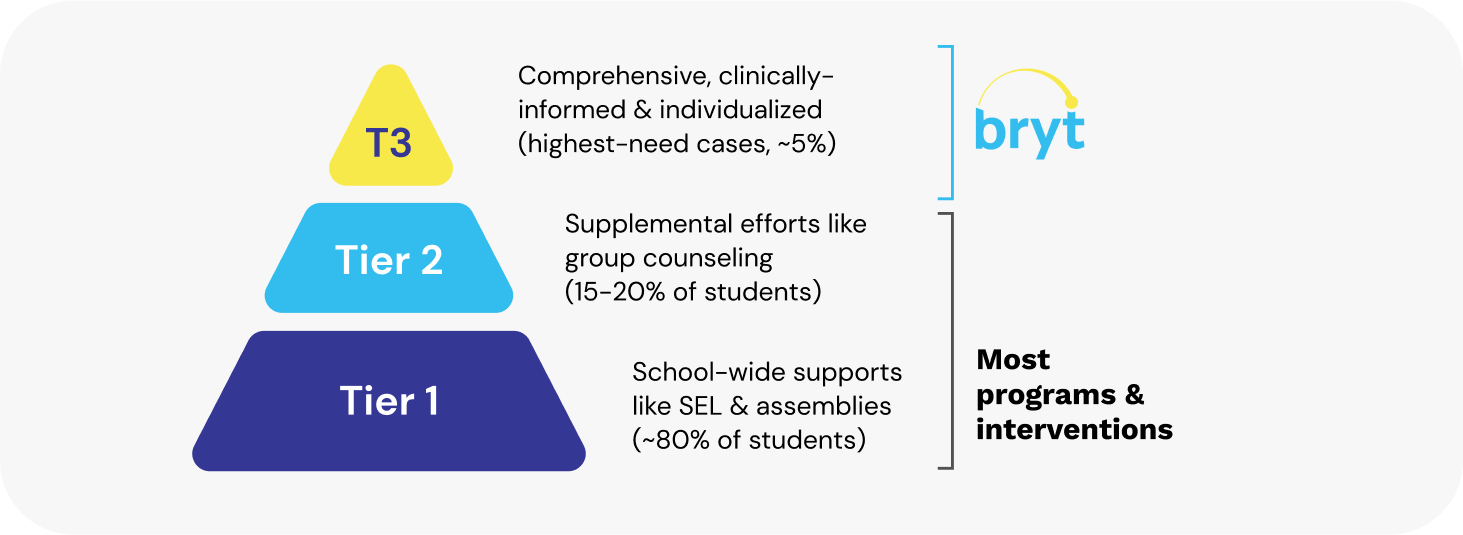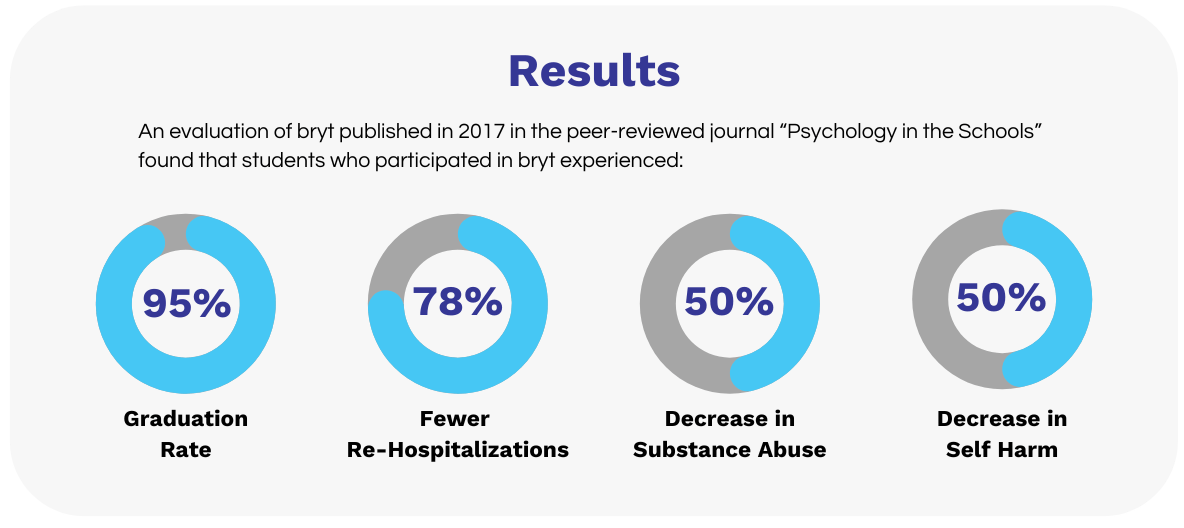bryt (pronounced “bright”) bridges the disciplines of education, mental health, and youth development to transform the way schools support students. For nearly twenty years bryt has worked to destigmatize mental health across communities so that school is a safe and inclusive environment to learn and thrive.
As a pioneer developing the model for tier three mental health support in schools, bryt is standing in the gap for students experiencing mental health crisis by working with schools and faculty to implement specialized programs.
The signature bryt Model for tier three mental health support helps school districts throughout the country implement programs that support youth experiencing various forms of mental health disruption. These in-school programs provide students with holistic support and equips faculty with the resources and on-site experts to help craft an academic and wellbeing plan during a student’s recovery. Through a collaborative process bryt works closely with schools and leaders in education to implement tier three mental health infrastructure so that school is not a barrier to for students’ recovery and wellbeing.
bryt is committed to collaboration, inclusion, and continuous improvement. This commitment is reflected in the ecosystem of student-centered solutions bryt has crafted with offerings including professional development series for educators, advisory services for districts, and a network of ongoing support for its member schools.










